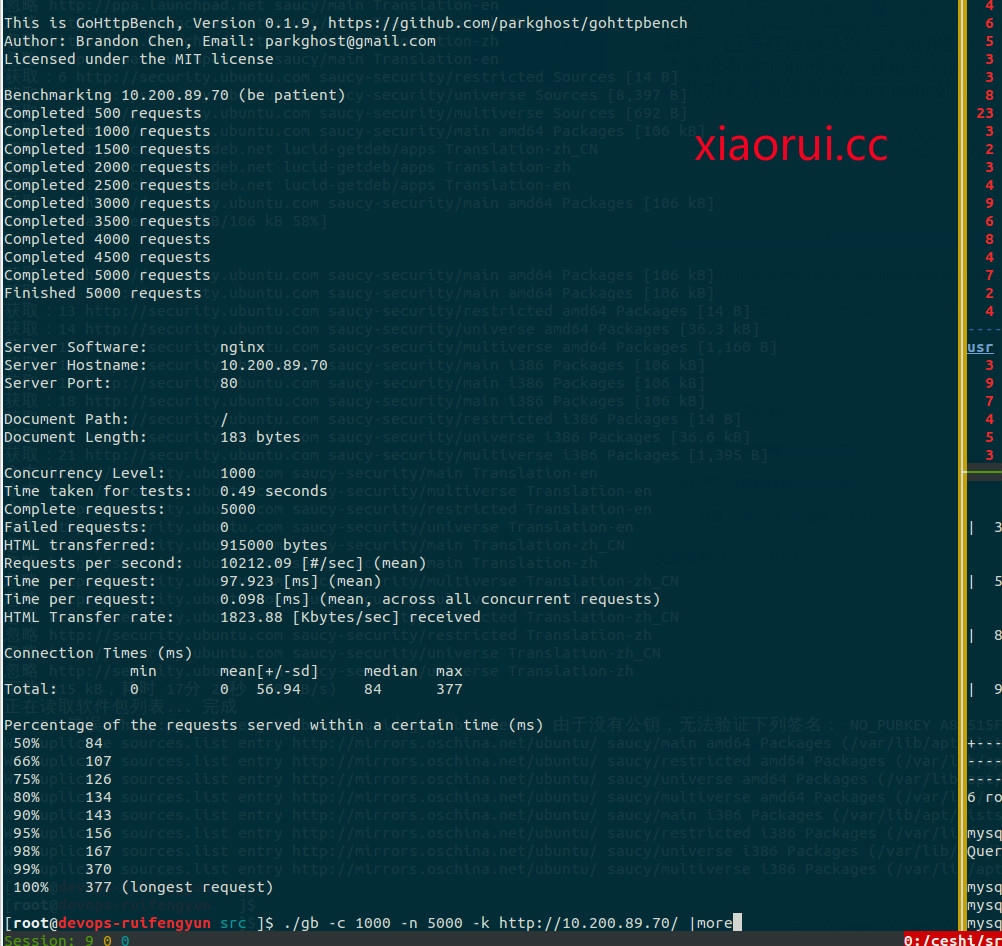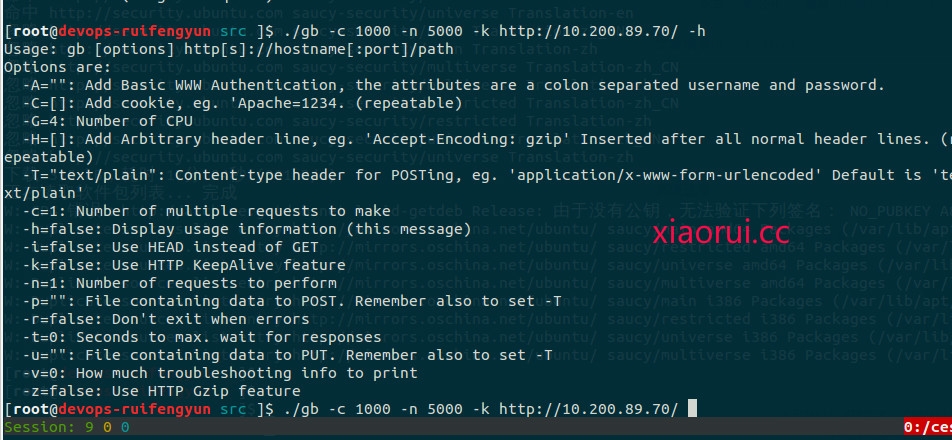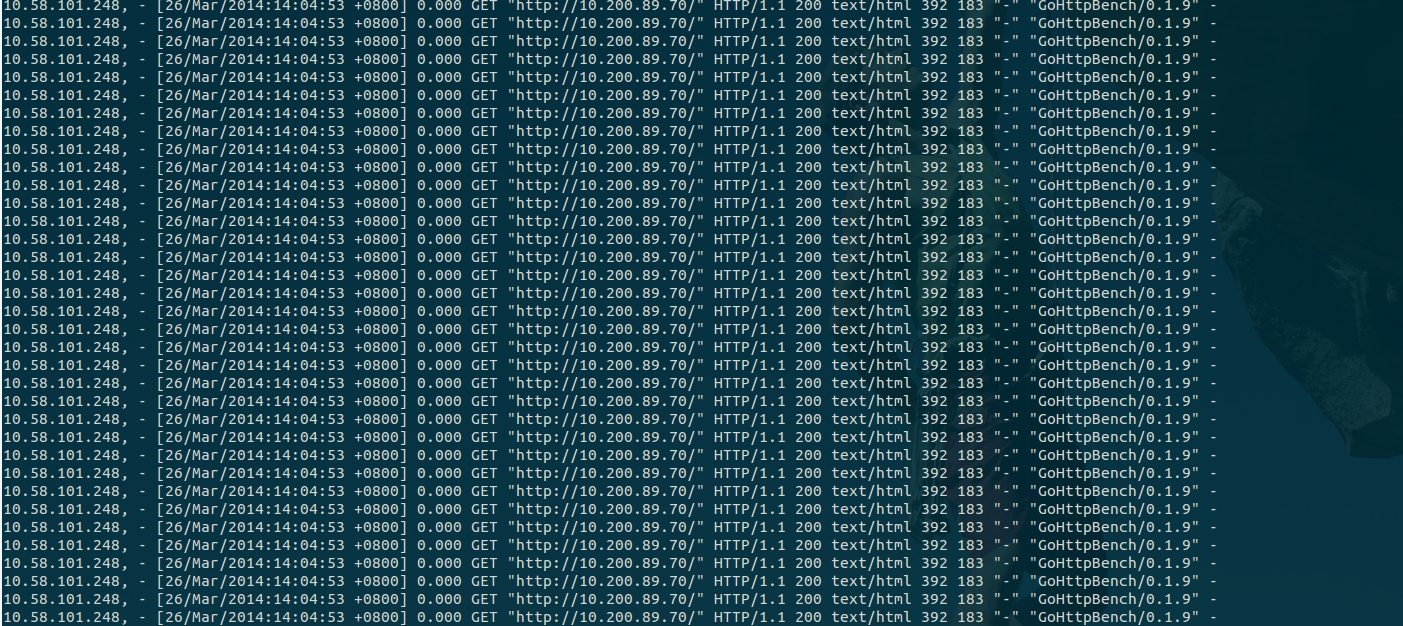前沿:
继续扩展我的golang服务端,这边有些数据库是没有权限的,对方给了我webservices的接口,针对异常的数据,我要去抓数据,再次分析,golang貌似没有python那么多的模拟浏览器访问的模块,还好默认的http就支持。 功能一点都不必urllib2 差。。。
正题!!! 这里是通过golang提供的net/http模块, http.NewRequest来进行数据抓取。 他能实现python下的urllib2的功能 !
原理不多说了,大家直接套用这两个get post的例子吧。
可以任意的加header头,比如怎么加一个浏览器的标识 !
client := &http.Client{]
req, err := http.NewRequest("POST", "http://127.0.0.1", bytes.NewReader(postData))
req.Header.Add("User-Agent", "无敌浏览器")
resp, err := client.Do(req)
defer resp.Body.Close()
下面是完整的例子,可以加更多的Header
#http://xiaorui.cc
package main
import (
"net/http"
"io/ioutil"
"fmt"
"net/url"
)
func main() {
client := &http.Client{}
reqest, _ := http.NewRequest("GET", "http://127.0.0.1/", nil)
reqest.Header.Set("Accept","text/html,application/xhtml+xml,application/xml;q=0.9,*/*;q=0.8")
reqest.Header.Set("Accept-Charset","GBK,utf-8;q=0.7,*;q=0.3")
reqest.Header.Set("Accept-Encoding","gzip,deflate,sdch")
reqest.Header.Set("Accept-Language","zh-CN,zh;q=0.8")
reqest.Header.Set("Cache-Control","max-age=0")
reqest.Header.Set("Connection","keep-alive")
reqest.Header.Set("User-Agent","chrome 100")
response,_ := client.Do(reqest)
if response.StatusCode == 200 {
body, _ := ioutil.ReadAll(response.Body)
bodystr := string(body);
fmt.Println(bodystr)
}
// reqest, _ = http.NewRequest("POST","http:/127.0.0.1/", bytes.NewBufferString(data.Encode()))
/ respet1,_ := http.NewRequest("POST","http://127.0.0.1/",url.Values{"key":"Value"})
// reqest1.Header.Set("User-Agent","chrome 100")
// client.Do(reqest1)
}
我们再来测试下 post获取数据 !
#http://xiaorui.cc
package main
import(
"fmt"
"net/http"
"net/url"
"io/ioutil"
)
func main(){
get()
post()
}
func get(){
response,_:=http.Get("http://127.0.0.1/")
defer response.Body.Close()
body,_:=ioutil.ReadAll(response.Body)
fmt.Println(string(body))
if response.StatusCode == 200 {=
fmt.Println("ok")
}else{
fmt.Println("error")
}
}
func post(){
//resp, err :=
http.PostForm("http://127.0.0.1",
url.Values{"name": {"ruifengyun"}, "blog": {"xiaorui.cc"},
"aihao":{"python golang"},"content":{"nima,fuck "}})
}
我们用http加上golang的runtime可以搞成类似 ab的压力测试工具,我昨天写了一个版本,但是在压倒3k以上的链接数的时候,会出现不少的error,原因可能是linux本身没有做tcp的优化,获取是对端的tornado没有用@gen,所以效率跟不上去,我的压力程序没有做defer panic处理。 今天看了下 golang的 gb压力测试工具,发现主要的思路是相同的,但是很多的细节没有做处理,比如channel的同步是用那种for <-c 的土方法实现的。
我的程序是有问题,但是老外有大牛已经构建了一套类似ab的工具,性能差不多,但是这个支持更多的选项和参数,包括代理,基本认证,请求头header信息,长链接,post,gzip压缩,开启几个cpu核心,cookie的插入。
go get github.com/parkghost/gohttpbench go build -o gb github.com/parkghost/gohttpbench
用golang实现的搞并发的压力测试工具 !
原文:xiaoruicc
-A=””: Add Basic WWW Authentication, the attributes are a colon separated username and password.
-C=[]: Add cookie, eg. ‘Apache=1234. (repeatable)
-G=4: Number of CPU
-H=[]: Add Arbitrary header line, eg. ‘Accept-Encoding: gzip’ Inserted after all normal header lines. (r
epeatable)
-T=”text/plain”: Content-type header for POSTing, eg. ‘application/x-www-form-urlencoded’ Default is ‘te
xt/plain’
-c=1: Number of multiple requests to make
-h=false: Display usage information (this message)
-i=false: Use HEAD instead of GET
-k=false: Use HTTP KeepAlive feature
-n=1: Number of requests to perform
-p=””: File containing data to POST. Remember also to set -T
-r=false: Don’t exit when errors
-t=0: Seconds to max. wait for responses
-u=””: File containing data to PUT. Remember also to set -T
-v=0: How much troubleshooting info to print
-z=false: Use HTTP Gzip feature
具体的用法:
咱们在看看nginx服务端的日志情况:





